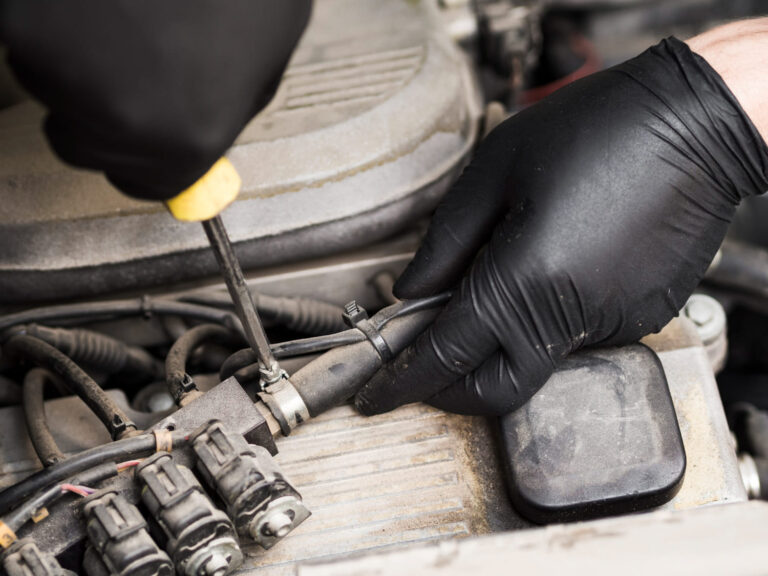Owning a Cummins-powered truck means you’re driving a machine built for durability, towing strength, and off-road reliability. But even the toughest drivetrain won’t last forever without proper care. One of the most overlooked maintenance tasks among truck owners is the transfer case fluid change. Neglecting this simple service can lead to expensive repairs down the road — and in heavy-duty Cummins trucks, those repairs aren’t cheap.
In this guide, we’ll break down how often you should change your transfer case fluid, why it matters, what signs to watch for, and expert maintenance tips every Cummins owner should know. Whether you drive a Dodge Ram 2500, 3500, or a heavy towing rig, this is your roadmap to keeping the transfer case in peak condition.
What Does the Transfer Case Do?
Before we dive into fluid change intervals, let’s make sure the basics are clear. The transfer case is a critical component in four-wheel-drive (4×4) and all-wheel-drive (AWD) vehicles. Its job is to distribute power from the transmission to the front and rear axles, making sure torque is applied where it’s needed most.
Inside the transfer case are gears, chains, and clutches that require proper lubrication to handle the intense stress of towing, hauling, and off-road use. Without fresh fluid, these parts grind against each other, causing excessive wear, overheating, and eventual failure.
Think of transfer case fluid as the lifeblood of your drivetrain — if it breaks down, so does your ability to tow heavy loads or crawl through muddy trails.
How Often Should You Change Transfer Case Fluid in a Cummins?
The big question most owners ask is: how often should you do a transfer case fluid change? The answer depends on how you use your truck, but here are general guidelines:
- Normal Driving Conditions: Every 50,000 miles (80,000 km) is a safe baseline for most Cummins trucks.
- Heavy Towing & Hauling: If you regularly tow campers, trailers, or heavy equipment, shorten that interval to 30,000–40,000 miles.
- Off-Road or Harsh Conditions: Mud, sand, and water crossings can contaminate the fluid quickly. In these cases, a 25,000–30,000 mile interval is ideal.
- Extreme Cold or Heat: Severe climates accelerate fluid breakdown. Inspect the fluid more frequently and replace it sooner if it looks dirty or burnt.

RaceME Ultra Review for Farmers: The Ultimate Upgrade for Heavy Trailer Work
Signs Your Transfer Case Fluid Needs Changing
Not sure if your transfer case is overdue? Watch for these warning signs:
- Grinding or Unusual Noises – A growl or whine when shifting into 4WD can indicate low or contaminated fluid.
- Difficulty Shifting Gears – Hard shifts or delayed engagement of 4WD are common symptoms of fluid breakdown.
- Leaking Fluid – Transfer cases can develop leaks around the seals. If you notice dark red or brown drips under your truck, inspect immediately.
- Burnt Smell – Overheated fluid smells sharp and burnt — a clear sign it’s time for replacement.
- 4WD Malfunction Light – In modern Rams, the dashboard may warn you if something’s wrong with the drivetrain.
Waiting for these symptoms can be costly. By the time you hear grinding or smell burnt oil, damage may already be done. Preventive maintenance is always cheaper than repairs.
What Type of Fluid Should You Use?
Not all fluids are created equal. For Cummins trucks, you’ll typically need ATF+4 (Automatic Transmission Fluid) or a manufacturer-specified transfer case fluid. Always double-check your truck’s manual, as using the wrong type can cause foaming, poor lubrication, and long-term wear.
TIP: Many Dodge Ram models use Mopar ATF+4, but performance enthusiasts often upgrade to premium synthetic fluids for added protection, especially when towing or running larger tires.
Expert Tips to Extend Transfer Case Life
Changing fluid is only part of the equation. To make your transfer case last the life of your Cummins, follow these expert tips:
- Inspect Fluid Regularly: Even between changes, check for color and contamination. Clean fluid should be bright red or amber, not brown or black.
- Avoid Shock Loads: Spinning tires and then suddenly grabbing traction puts huge stress on gears and chains. Engage 4WD before you need it.
- Check Seals for Leaks: Transfer case leaks often go unnoticed until fluid runs low. A quick inspection every oil change can prevent damage.
- Pair with Differential Service: If you’re already changing transfer case fluid, consider doing your front and rear differentials at the same time. It keeps the whole drivetrain balanced.
- Use the Right Fluid: Never cut corners with cheap fluid. Your Cummins is built for hard work, so protect it with the proper spec.

What is the Best Oil for 6.7 Cummins? Ultimate Guide
Frequently Asked Questions About Transfer Case Maintenance
- Does the fluid last forever?
Even synthetic fluids break down under high heat and stress. - If it’s not leaking, is it fine?
Internal wear happens long before you see external leaks. - If 4WD isn’t used often, does the fluid still need changing?
Even inactive parts need lubrication, and moisture can contaminate the case over time.

RaceMe ULTRA Diesel Tuner
- +200 HP Performance Boost
- Real–Time Monitoring & Tuning
- Easy Plug & Play Install + Updates Free
- DPF/EGR/DEF Delete Options
- Works with RAM 2500 & 3500





